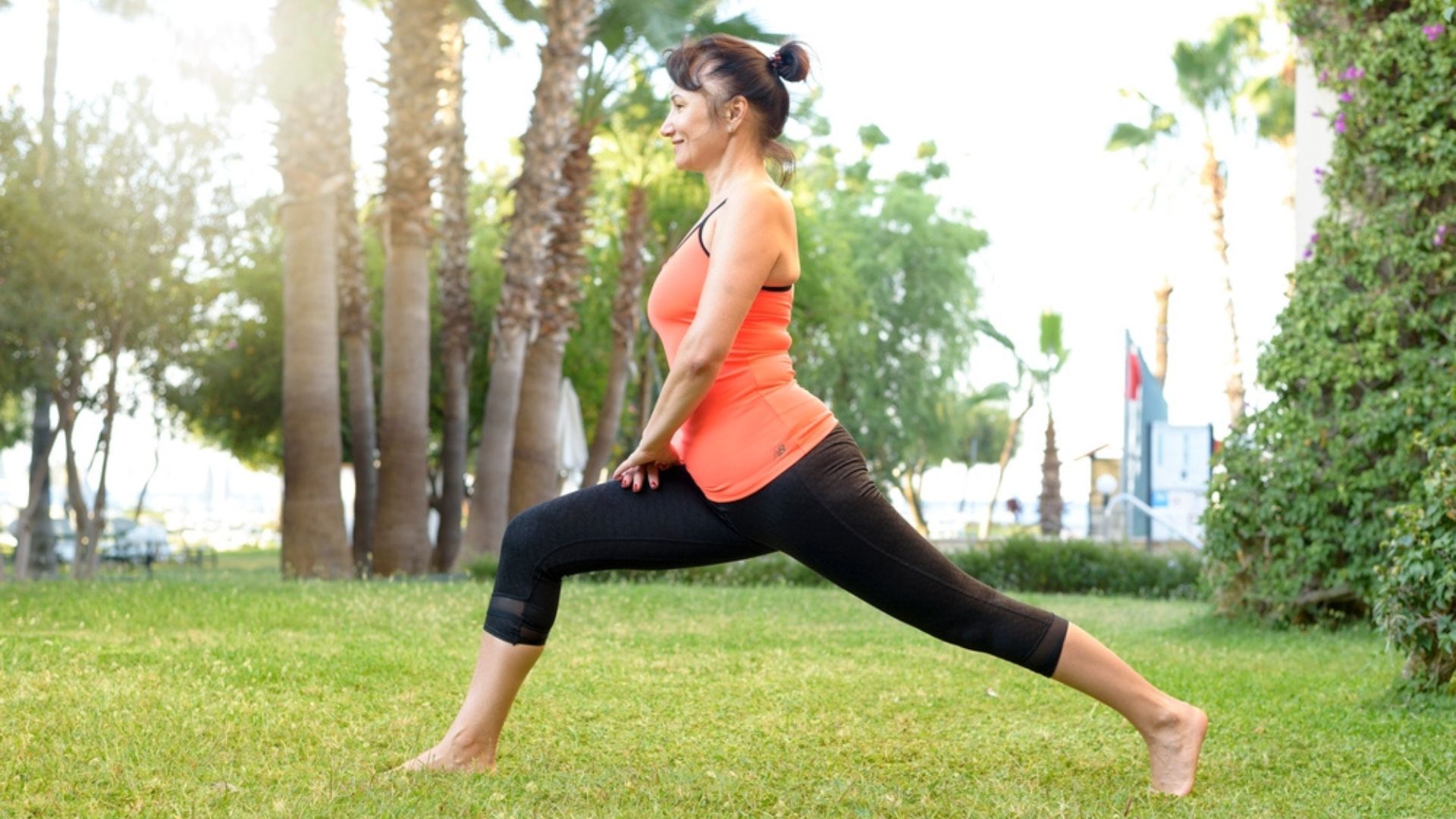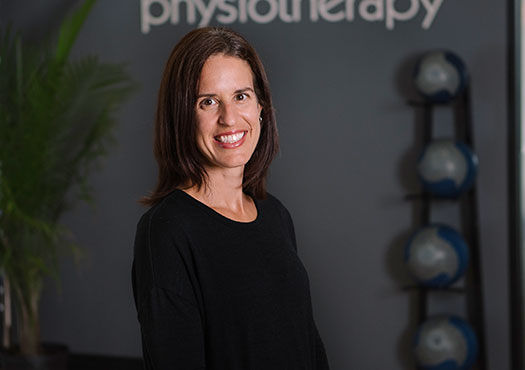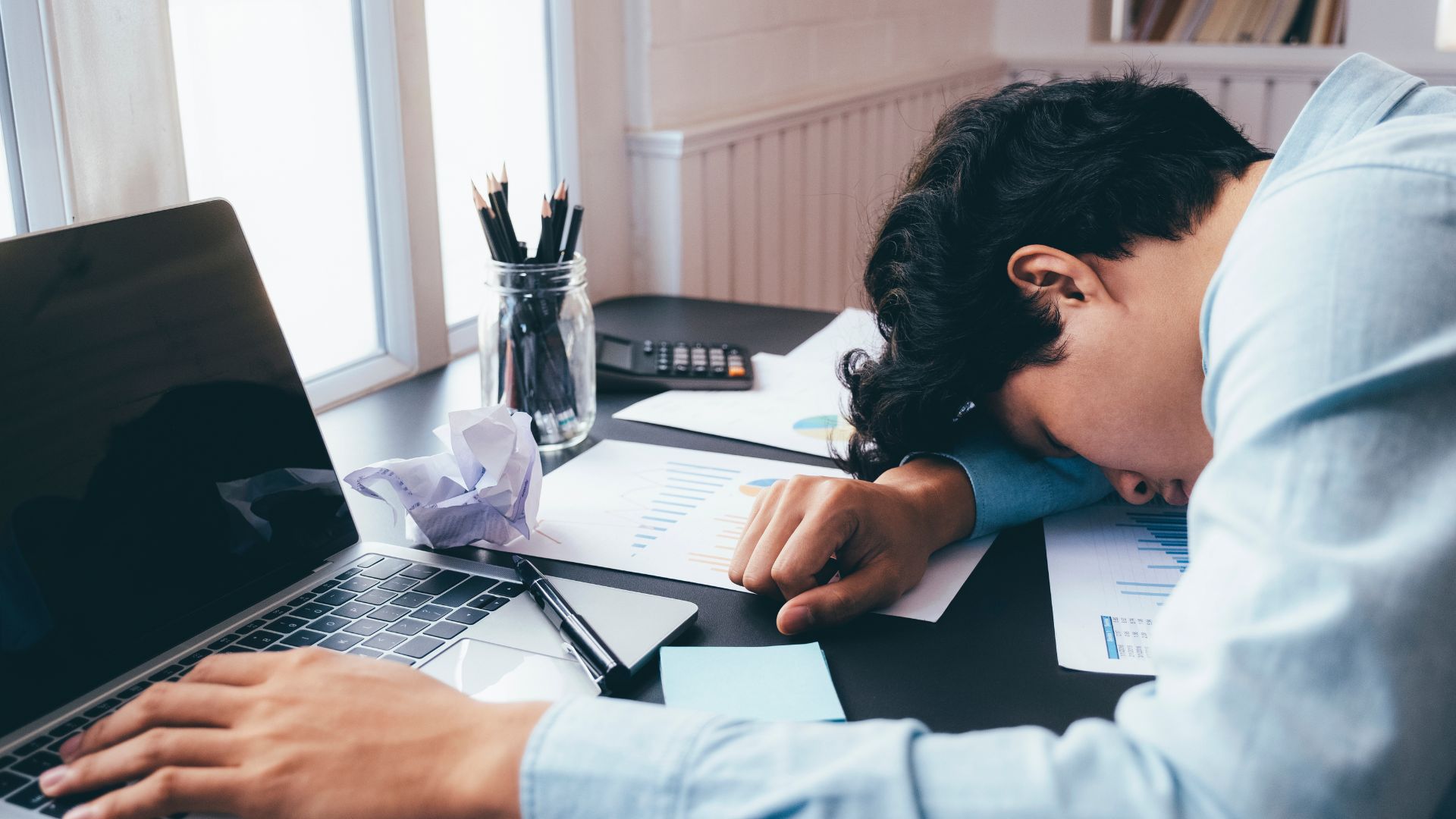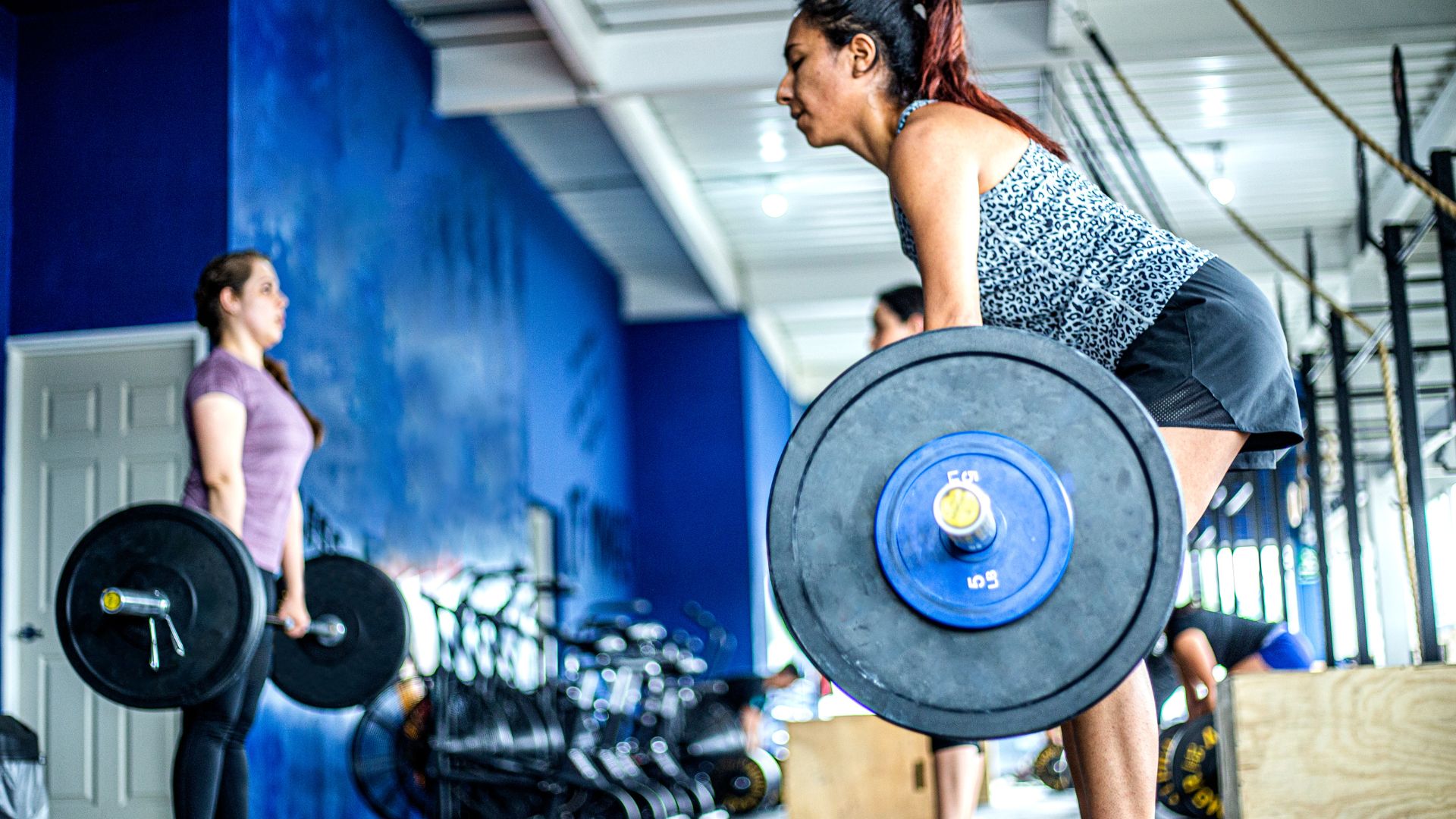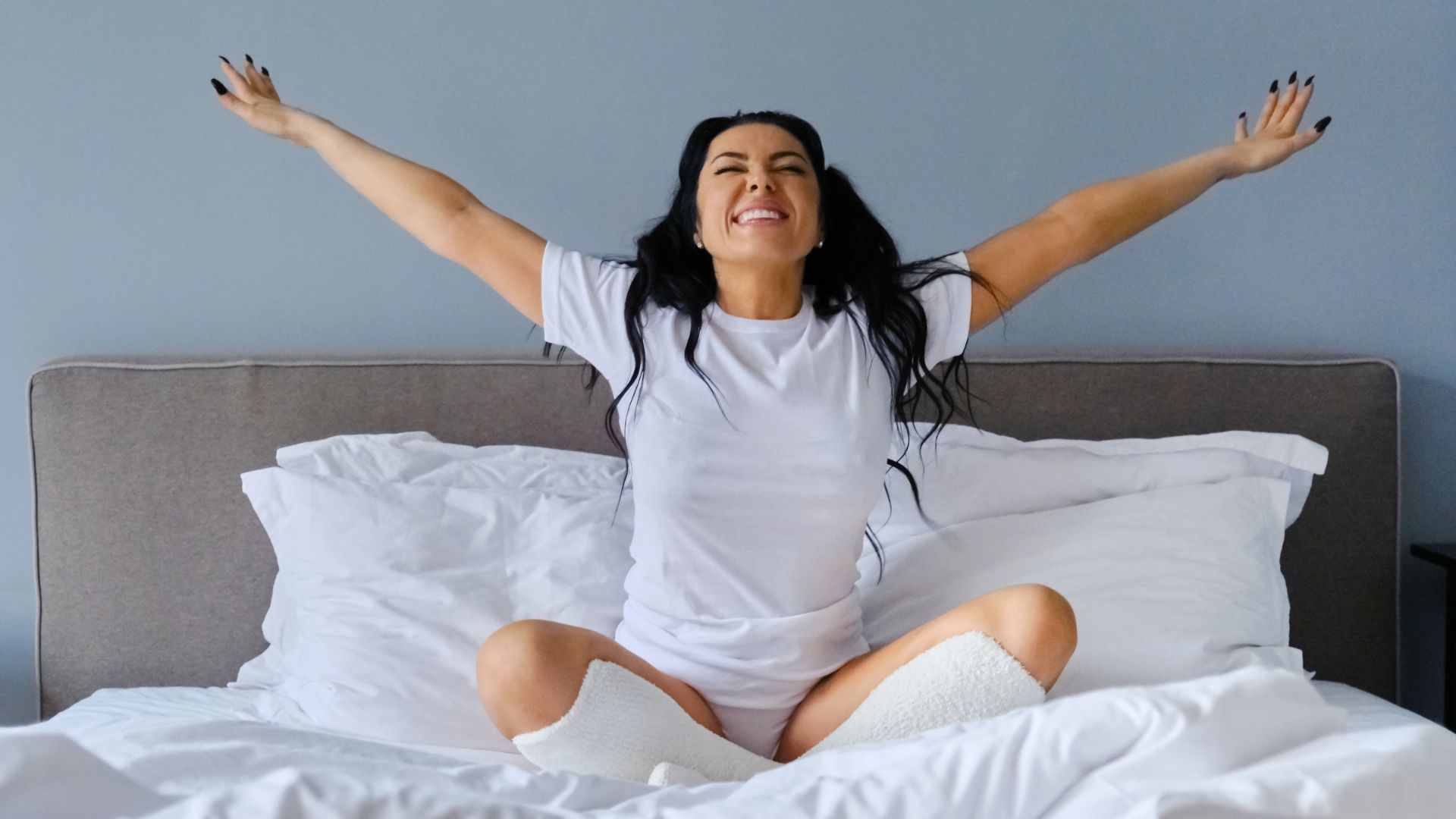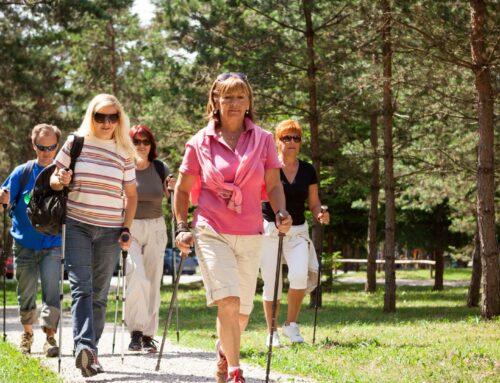Menopause transition can bring a host of physical, emotional and social symptoms that can create a feeling of losing control. Physical symptoms including hot flashes and night sweats, changes to bone density and body composition, poor sleep and changes to mood occur due to the changing in hormone levels during this time.
It’s no wonder it is often called the “Change of Life”. However, not everyone experiences menopause symptoms the same way. Some have few and less severe symptoms, while others have more frequent and stressful ones.[i] In addition, some lifestyle behaviours can impact the onset and severity of your symptoms.
In this article, we will define menopause and review the physical activity guidelines for adults before examining exercise and menopause, specifically the positive effects that exercise can have on symptoms. I will also provide tips on incorporating exercise into your daily routine.
Table of Contents:
- What is menopause?
- Physical activity guidelines for adults
- Effects of exercise on body composition
- Effects of exercise on bone density
- Effects of exercise on sleep
- Effects of exercise on mood
- Tips on incorporating exercise into your daily routine
What is Menopause?
Menopause occurs when you have gone without a menstrual period for 12 months. Perimenopause can begin eight to 10 years before the onset of menopause. During this period, the ovaries gradually produce less estrogen.[ii]
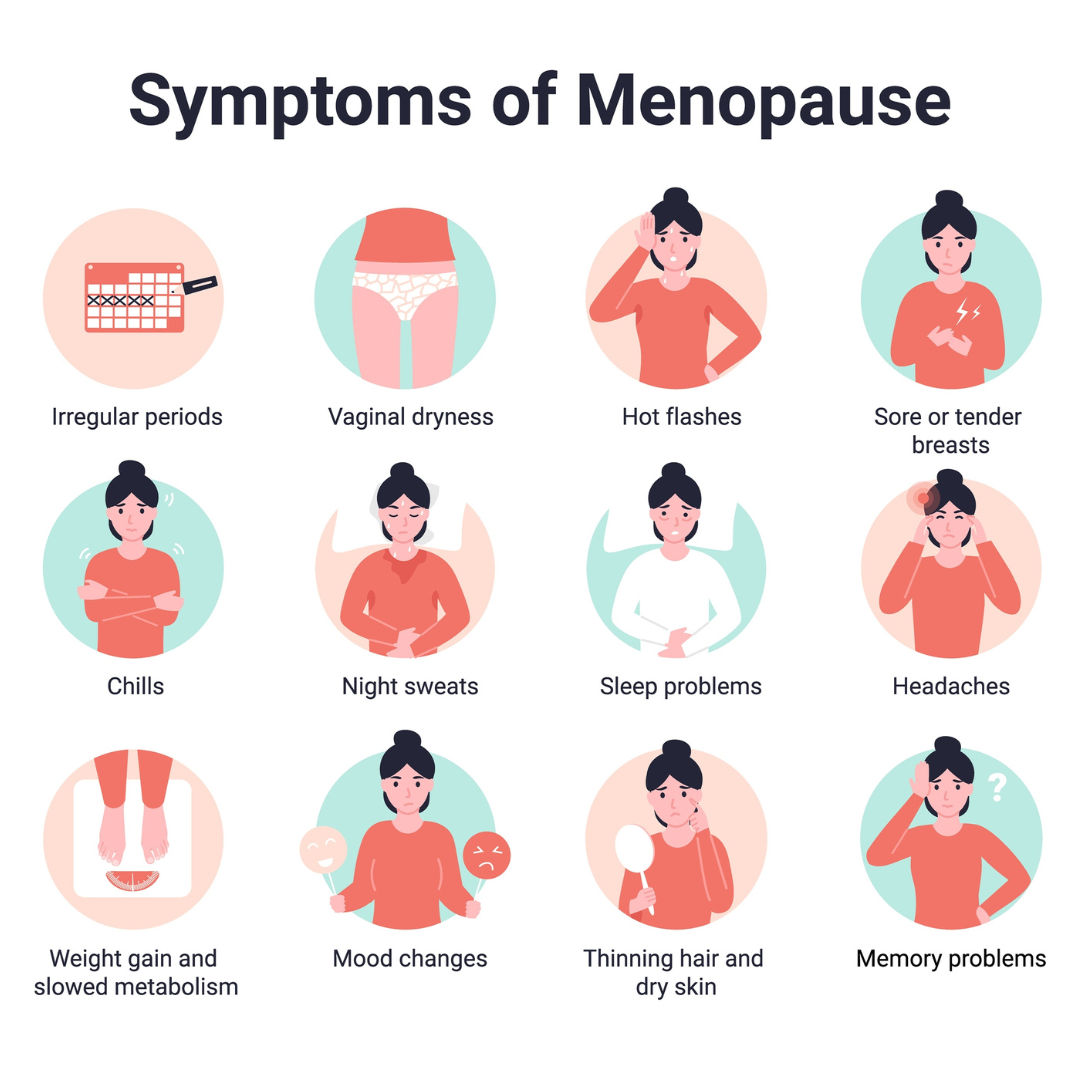
Symptoms of menopause can include: irregular periods, vaginal dryness, hot flashes, sore or tender breasts, chills, night sweats, sleep problems, headaches, weight gain and slowed metabolism, mood changes, thinning hair and dry skin, memory problems.
Although the average age of menopause is 51, menopause can actually happen any time from the 30s to the mid-50s or later. Smokers who are underweight tend to have an earlier menopause, while overweight people often have a later menopause. Generally, a person tends to have menopause at about the same age as her parent did.[iii]
Physical Activity Guidelines for Adults
The Canadian Physical Activity Guidelines recommend 150 minutes of moderate to vigorous intensity exercise per week for adults ages 18 to 64. Additionally, they recommend muscle strengthening activities using major muscle groups at least twice a week.
Unfortunately, statistics indicate that not nearly enough of us are getting the recommended amount of exercise to reap the benefits. In 2021, only 57.8% of Canadians between the ages of 35 to 49 and 56.2% between the ages of 50 and 64 reported getting the recommended 150 minutes of physical activity per week.[iv]
Daily activity and exercise have long been shown to have numerous benefits on the body and mind. These physical activity guidelines become even more important as we age to help maintain independence, reduce risk of injury, and prevent disease.
Effects of Exercise on Body Composition
The hormonal changes that occur during menopause can have significant effect on metabolic processes that alter body composition. During the menopause transition there is an increase in fat mass and decrease in lean body mass because of hormonal changes.[v] In addition, this increase appears to be in visceral fat around the abdomen, putting those at a greater risk of cardiovascular disease.[vi]
As we age, exercise becomes increasingly important to maintain lean body mass. Evidence suggests that maintaining and increasing participation in physical activity helps to mitigate the effects of menopause transition on body composition.[vii] Both aerobic and resistance training exercises are key factors in maintaining muscle mass and limiting body fat.
Effects of Exercise on Bone Density
One of the biggest risk factors for bone loss during midlife is menopause. Bone mineral density loss increases substantially in the late perimenopausal years and remains rapid in the first post menopausal years with approximately 40% of all postmenopausal women eventually experiencing fractures.[viii]
Exercise can have a positive impact on bone health. A systemic review found that a combination of aerobic exercise and resistance training had a significant effect on increasing bone mineral density in the hip and spine areas.[ix] Stronger bones and muscles help improve mobility and help us maintain greater independence as we age.
Effects of Exercise on Sleep
Hormonal changes and irregular periods during menopause transition often leads to night sweats and hot flashes that affect the quality and duration of sleep. These sleep disturbances can lead to changes in mood and physical health. Exercise has long been known to have a positive effect on sleep quality. Systematic reviews have concluded that moderate exercise improves sleep quality in people of all ages.[x] Recent guidelines outlined by the Journal of Obstetrics and Gynecology Canada include aerobic exercise as part of the treatment approach for sleep issues during menopause transition.[xi]
Effects of Exercise on Mood
Fluctuating hormonal levels along with physical changes to the body can negatively affect mood during menopause transition. Numerous epidemiological studies suggest that there is a heightened risk for depressive symptoms as well as clinical and subclinical depressive disorders during the perimenopause period.[xii]
This vulnerability is associated with a number of factors, including discomfort from physical symptoms associated with the transition—particularly hot flashes and night sweats), stress, inadequate social support, health behaviors, lifestyle, sociodemographic characteristics and history of clinical depression.[xiii]
Exercise has positive effects on mood through the release of natural feel-good hormones called endorphins. Studies suggest that for those in menopause transition, physical activity is directly related to positive mood, vigor, and general well-being. It can have a positive effect on negative symptoms, such as depression, anxiety, and perceived stress.[xiv]
Tips for Incorporating Exercise into Your Daily Routine
Finding time to exercise among the many demands of life can be difficult. Yet as we age, it becomes critical to incorporate, maintain and increase physical activity for the quality of our life. Here are some tips to exercise during menopause transition:
- Do what you enjoy! – Exercise is much more motivating and sustainable when you do something you like. Don’t just run just because you heard it was good for you. Find an activity that you love to do, whether that’s walking, swimming or dancing
- Schedule it into your day – The days will often get filled with other tasks and things on the to-do lists. Schedule a time when you have energy to move.
- Don’t forget to add resistance training – We now know how important resistance training to your health as well as independence.
- Change your mindset – Physical activity is not a hobby. It is not something you only do when you have free time or a selfish endeavour. It is part of the prescription for everyday living. It is the single most important thing you can do for your physical and mental health.
While we can’t stop the natural processes that occur as we age, we can take steps to be as healthy and independent as possible. Our therapists at Propel Physiotherapy have experience and knowledge treating individuals across the lifespan. Whatever your goals may be, we can help devise a tailored exercise approach that best fits your needs.
References
[i] Introduction to Menopause, Johns Hopkins Medicine
[ii] Menopause, Cleveland Clinic
[iii] Introduction to Menopause, Johns Hopkins Medicine
[iv]Statistics Canada. Table 13-10-0096-13 Physical activity, self reported, adult, by age group
DOI: https://doi.org/10.25318/1310009601-eng
[v] Greendale GA, Sternfeld B, Huang M, Han W, Karvonen-Gutierrez C, Ruppert K, Cauley JA, Finkelstein JS, Jiang SF, Karlamangla AS. Changes in body composition and weight during the menopause transition. JCI Insight. 2019 Mar 7;4(5):e124865. doi: 10.1172/jci.insight.124865. PMID: 30843880; PMCID: PMC6483504.
[vi] Fenton A. Weight, Shape, and Body Composition Changes at Menopause. J Midlife Health. 2021 Jul-Sep;12(3):187-192. doi: 10.4103/jmh.jmh_123_21. Epub 2021 Oct 16. PMID: 34759699; PMCID: PMC8569454.
[vii] Sternfeld B, Wang H, Quesenberry CP Jr, Abrams B, Everson-Rose SA, Greendale GA, Matthews KA, Torrens JI, Sowers M. Physical activity and changes in weight and waist circumference in midlife women: findings from the Study of Women’s Health Across the Nation. Am J Epidemiol. 2004 Nov 1;160(9):912-22. doi: 10.1093/aje/kwh299. PMID: 15496544.
[viii] Joel S. Finkelstein, Sarah E. Brockwell, Vinay Mehta, Gail A. Greendale, MaryFran R. Sowers, Bruce Ettinger, Joan C. Lo, Janet M. Johnston, Jane A. Cauley, Michelle E. Danielson, Robert M. Neer, Bone Mineral Density Changes during the Menopause Transition in a Multiethnic Cohort of Women, The Journal of Clinical Endocrinology & Metabolism, Volume 93, Issue 3, 1 March 2008, Pages 861–868, https://doi.org/10.1210/jc.2007-1876
[ix] Shifang Zhang RN,Xiuxiu Huang RN,Xiaoyan Zhao RN,Bei Li RN,Ying Cai RN,Xiaoqin Liang RN,Qiaoqin Wan PhD, Effect of exercise on bone mineral density among patients with osteoporosis and osteopenia: A systematic review and network meta-analysis, 1 November 2021 https://doi.org/10.1111/jocn.16101
[x] Feifei Wang & Szilvia Boros (2021) The effect of physical activity on sleep quality: a systematic review, European Journal of Physiotherapy, 23:1, 11-18, DOI: 10.1080/21679169.2019.1623314
[xi] Alison K. Shea, Wendy Wolfman, Michel Fortier, Claudio N. Soares, Guideline No. 422c: Menopause: Mood, Sleep, and Cognition, November 03, 2021DOI:https://doi.org/10.1016/j.jogc.2021.08.009
[xii] Bromberger JT, Kravitz HM. Mood and menopause: findings from the Study of Women’s Health Across the Nation (SWAN) over 10 years. Obstet Gynecol Clin North Am. 2011 Sep;38(3):609-25. doi: 10.1016/j.ogc.2011.05.011. PMID: 21961723; PMCID: PMC3197240.
[xiii] ibid
[xiv] Sternfeld B, Dugan S. Physical activity and health during the menopausal transition. Obstet Gynecol Clin North Am. 2011 Sep;38(3):537-66. doi: 10.1016/j.ogc.2011.05.008. PMID: 21961719; PMCID: PMC3270074.
Written by

